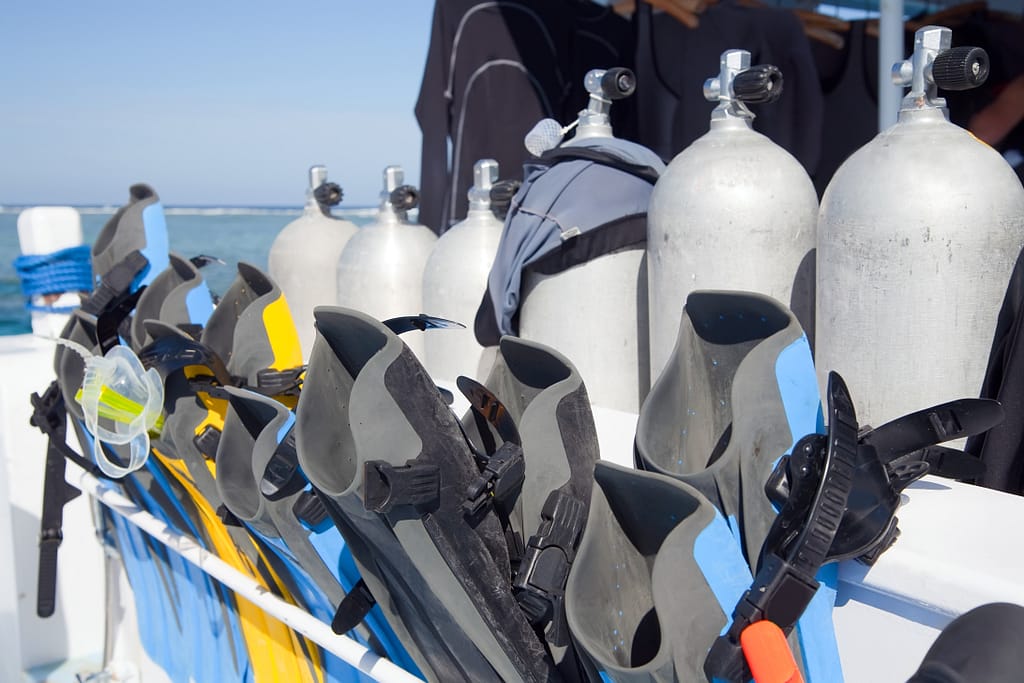The exploration of Earth’s vast oceans has long captivated the curiosity of scientists, researchers, and marine enthusiasts alike. Many companies work in this industry – and many more people dream of doing this exploration. In these cases, oceanographic equipment rental proves to be a pivotal practice for the activity.
Unlocking the mysteries hidden beneath the waves requires sophisticated tools and technologies, often beyond the financial reach of individual researchers or institutions. However, in recent years, the practice of oceanographic equipment rental has emerged as a crucial solution, providing cost-effective access to cutting-edge tools for studying the world’s oceans.
For the companies who work on renting this type of tools, organization and asset tracking of equipment is of fundamental importance. For the “rentees”, it is important to understand the advantages of oceanographic equipment rental – and also, despite them, why buying equipment can eventually evoke more fruitful feedback.
So let’s dive into this topic and convey some important information to help both sides of this equation.
Oceanographic equipment rental: a brief overview
Oceanographic equipment encompasses a wide array of specialized instruments designed to collect data about the physical, chemical, and biological properties of the ocean. These tools include underwater sensors, remotely operated vehicles (ROVs), autonomous underwater vehicles (AUVs), sediment samplers, and more.
The high cost of purchasing and maintaining such equipment can be a barrier to entry for many researchers, making oceanographic equipment rental an attractive option. In fact, studies indicate that in the next 10 years, the industry is expected to double in value.
That said, oceanographic equipment still plays a crucial role in advancing our understanding of the complex and dynamic marine environment. These instruments are essential for researchers and scientists studying the ocean, from mapping its topography to investigating marine life and monitoring environmental parameters.
Main examples of oceanographic equipment

Underwater sensors
These sensors are designed to measure a wide range of parameters such as temperature, salinity, pressure, and dissolved oxygen. Advanced sensors may also include capabilities for detecting nutrients, chlorophyll concentrations, and other chemical markers indicative of water quality.
Remotely operated vehicles (ROVs)
ROVs are unmanned submersibles controlled by operators on the surface, typically via a cable or through acoustic signals. Equipped with cameras and various sampling devices, ROVs can explore extreme depths and gather high-resolution imagery and samples from the ocean floor.
Autonomous underwater vehicles (AUVs)
AUVs are self-propelled, untethered vehicles capable of carrying out pre-programmed missions for data collection. These vehicles are particularly valuable for large-scale oceanographic surveys, mapping the ocean floor, and studying ocean currents.
Sediment samplers
Sediment samplers are specialized tools designed to collect samples from the ocean floor, providing valuable information about the composition and characteristics of the seabed. Researchers use sediment samples to study geological processes, sediment transport, and the distribution of marine organisms.
3 benefits of renting oceanographic equipment
Read below what to expect from this business approach:
1. Cost efficiency
Oceanographic equipment is often technologically advanced and comes with a hefty price tag.
By opting for rental services, researchers can access state-of-the-art tools without the upfront costs associated with purchasing. This financial flexibility enables smaller research projects and institutions to participate in marine research.
2. Flexibility
Different research projects have distinct requirements when it comes to equipment specifications.
Oceanographic equipment rental services offer a diverse range of instruments, allowing researchers to choose the tools that best suit their specific needs. This flexibility ensures that the rented equipment is tailored to the unique demands of each study.
3. Maintenance and upkeep
Maintaining and servicing oceanographic equipment can be a logistical challenge. Rental services often include maintenance and technical support, relieving researchers of the responsibility for upkeep.
This ensures that the equipment is in optimal condition, minimizing downtime and allowing researchers to focus on their scientific objectives.

6 benefits of purchasing oceanographic equipment
Dealing with oceanographic equipment rental companies is most likely the best way to start setting up a global, GPS-tracking system for your assets – but once you’re geared up, there’s no reason to not implement your own infrastructure of IoT devices. In the long run, this is a natural evolution in data management, and partnering up with companies such as Datanet IoT can (and will) be just as beneficial to any business.
Check out some advantages of upgrading your rental equipment to full ownership:
1. Long-run cost efficiency
While the initial investment for purchasing oceanographic equipment may be high, in the long run, it can be more cost-effective than renting. If you have ongoing or frequent needs for the equipment, the cumulative cost of renting over time may surpass the purchase cost.
2. Flexibility and availability
When you own oceanographic equipment, you have the flexibility to use it whenever you need it without worrying about rental availability. This can be crucial for research projects, ongoing studies, or fieldwork that requires consistent access to the equipment.
3. Customization and familiarity
Owning the equipment allows for customization based on specific research requirements. Familiarity with the equipment also grows over time, making it easier for researchers and technicians to operate and troubleshoot, potentially enhancing the efficiency of data collection and analysis.
4. Extended usage periods
Some research projects may require extended deployment of equipment in the field – owning the equipment allows for longer usage periods without the constraints of rental agreements, which often have predefined time limits.
5. Investment in technology
Purchasing equipment allows for ownership of the latest and most advanced technology on the market. In contrast, rental equipment may be older models, and you might have limited options based on what is available for rent at any given time.
6. Long-term projects and continuous monitoring
If your research involves long-term projects or continuous monitoring of oceanographic conditions, owning equipment provides the convenience of keeping the instruments deployed for extended periods without the need for frequent rentals or returns.
How oceanographic equipment rental companies help asset tracking
Asset tracking is of extreme importance and can be a game changer in their success in the business. As mentioned, this holds true even for industries that don’t necessarily rent but own their equipment – like oceanographic institutes, offshore oil and gas companies, ocean research laboratories, and the military/navy.
Effective asset tracking in oceanographic equipment involves the comprehensive management of a diverse range of complex and sensitive tools. These organizations often deploy this equipment across different geographical locations, ranging from deep-sea research sites to coastal regions.
This results in the need for meticulous tracking and inventory management. Each piece of equipment, often housed in specialized containers or boxes, requires careful monitoring to ensure efficient utilization and prevent loss or misplacement.
Therefore, asset tracking plays a crucial role in optimizing the utilization of these valuable resources and minimizing downtime associated with lost or misplaced equipment.
Utilizing advanced technologies, such as GPS and RFID (Radio-Frequency Identification), it is possible to develop real-time tracking capabilities. This integration enables organizations to monitor the location and status of equipment remotely and with great precision.
A comprehensive asset tracking system also allows companies to record serial numbers, specifications, maintenance history, and deployment locations for each piece of equipment.
Moreover, by tracking the usage patterns of oceanographic equipment, organizations can make informed decisions about resource allocation. This includes identifying high-demand equipment, predicting maintenance needs, and strategically planning deployments.

Datanet IoT presents: Yabby3 and Oyster3 asset-tracking solutions
Oceanographic equipment rental has become a game-changer in the realm of marine research, democratizing access to essential tools and technologies. By breaking down financial barriers and offering a range of customizable options, rental services empower researchers to delve deeper into the oceans and uncover the secrets held within.
Alongside that, effective asset tracking in oceanographic organizations is essential for maximizing the utility of equipment, minimizing losses, and streamlining operational processes on a global scale.
That said, implementing advanced tracking technologies and robust inventory management systems significantly contributes to the success of oceanographic research and exploration missions – and that means that full ownership of equipment is eventually needed.
We here at Dananet IoT have worked in the asset-tracking industry for quite some time, so we know firsthand the importance of these tracking systems for oceanographic industries. To help these businesses, we offer two products: the Yabby3 and the Oyster3, both specialized in tracking oceanographic equipment assets in the most complex situations.
Get in contact right now to learn more about our products and schedule a presentation!






